Matteo Miele
Aug 7 2022 •

Kokhanchikov/Shutterstock
LONG READ
This is a preprint excerpt from Mongolian Independence and the British: Geopolitics and Diplomacy in High Asia, 1911–1916, by Matteo Miele (forthcoming 2022, E-International Relations). Download PDF
At the end of 1903, the British Expedition to Tibet began, headed for Lhasa and under the command of Francis Edward Younghusband. Younghusband, who had already distinguished himself at a young age for his explorations in High Asia,[1] was not the first Englishman to admire the Po-ta-la. This primacy had instead belonged to Thomas Manning, who had arrived in the Tibetan capital almost a century before Younghusband. Manning was born on November 8, 1772 in Broome, Norfolk.[2] After his studies in Cambridge, at Caius College, the young physician studied Chinese in France and, recommended by Sir Joseph Banks, president of the Royal Society, managed to embark on a ship of the East India Company in 1806; he reached Canton the following year and remained there until 1810, when he went to Calcutta to then head towards Tibet.[3] In Lhasa, Thomas Manning met the ninth dalai lama on December 17, 1811.[4] At the time, the latter was just a child; Lung-rtogs-rgya-mtsho, born in 1806, died at the age of nine in 1815.[5] The Tibetan words of the little monk were translated into Chinese to Manning’s secretary, who finally translated them to the doctor in Latin.[6] The Englishman asked for books on the religion and ancient history of Tibet, as well as a lama to instruct him, but the request and the answer were lost in the intricate path of translations.[7] From the point of view of political analysis, interest in Manning’s journey is, however, limited. He was acting neither on behalf of the government nor for the East India Company, but his personal success is certainly – and a fortiori – indisputable.
Indeed, presenting Manning’s biography, the British geographer and future president of the Royal Geographical Society, Clements Robert Markham, wrote in 1876:
He appears to have received little or no aid from the Government; to have been left entirely to his own resources without official recognition of any kind, and all the credit of his extraordinary journey is solely due to himself.[8]
Before and after Manning’s trip the official British missions to Tibet had obtained limited results, but – thanks, in particular, to adventurous spies whose stories touch on the fictional – had developed the knowledge of the British in the field of exploration.[9] The first British expedition to Tibet had been led by George Bogle in the 1770s,[10] in a geopolitical and economic context that was profoundly different from that of the beginning of 1904. There had not yet been the First Opium War (1839-1842) and the subsequent Treaty of Nanking (1842) which opened five Chinese ports and handed over the island of Hong Kong to the British.[11] Furthermore, at the time, Tibet could not yet be considered as a real target of the Russian Empire.
Unlike the eighteenth century, however, the international framework of High Asia between the end of the nineteenth and the beginning of the twentieth century, from the British point of view, hinged primarily on strategic and defensive issues (commercial matters were in third place). The decades immediately preceding the Younghusband Expedition had been filled with British fear of Russian operations in the region. As for Tibet, the Russian expedition of 1899-1901 led by Pëtr Kozlov[12] had been another demonstration of the risk: the Russians had arrived as far as Chab-mdo, the gateway to what was later called Outer Tibet.[13] Kozlov’s expedition had come dangerously close to Lhasa and therefore to India, and although it failed in its goal of reaching the Tibetan capital, it was still enough to alarm the British. The Russo-Japanese War broke out only in February 1904, with Younghusband already on the way.
It is enough to follow the progressive Russian advance in Central Asia in the second half of the nineteenth century to realize the new geopolitical role of that region for British India and to understand the scene on which the Great Game unfolded. The three Islamic states east of the Caspian Sea had progressively fallen under the direct or indirect control of Russia. The city of Tāshkand (Russian: Tashkent), an important trading center of the Khanat of Khoqand, had been conquered by the tsarist troops in 1865[14] and formally annexed to the Russian Empire the following year.[15] In 1867, therefore, the city became the capital of a Russian Turkestan under the authority of a governor-general,[16] in the person of Konstantin Petrovich Kaufman.[17] In 1868 Samarkand (Samarqand) fell, conquered, together with the nearby Kattah-qūrghān (Russian: Kattakurgan), from the emir of Bokhara (Bokhārā) who also became a tributary of the tsar.[18] On September 28, 1873, Russia and Bokhara signed a friendship treaty.[19] That same year, a campaign against the Canat of Khiva (Khīvah)[20] forced the sovereign of the country to declare himself as a ‘fidèle serviteur’ of the Russian emperor:
Séid Mouhamed Rahim Boghadour Khan se reconnaît fidèle serviteur de l’Empereur de toutes les Russies. Il renonce à toutes relations amicales directes avec les Souverains et Khans voisins, et à la conclusion de toutes Conventions de Commerce ou autres avec eux ; il s’engage à n’entreprendre contre eux aucune opération de guerre à l’insu ou sans l’assentiment des autorités militaires supérieures Russes.[21]
The Canat of Kokand (Khaūqand) – already linked to Saint Petersburg since 1868 by a commercial treaty[22] – had been first invaded in 1875, resulting in the annexation of the north of the country,[23] and in March 1876 the last portion of territory still formally independent was incorporated into the lands of the tsar.[24]
A few weeks after the Russian complete conquest of the Canat of Kokand, on April 27, the British Parliament approved the Royal Titles Act of 1876,[25] on the basis of which, the next day, Queen Victoria issued a proclamation adding to her titles that of ‘Indiæ Imperatrix’.[26] Almost twenty years earlier, in 1858, following the Sepoy Mutiny, control of India had passed from the East India Company to the Crown.[27]
Between 1878 and 1880 the British fought the Second Anglo-Afghan War.[28] On May 26, 1879, Pierre Louis Napoleon Cavagnari and the emir of Afghanistan, Moḩammad Ya‘qūb Khān, signed the Treaty of Gandamak (Gandomak) by which the Asian country became a British protectorate (Article III) and a representative settled in Kabul (Article IV).[29] The appointed representative was in fact Cavagnari who had assumed the post in July 1879, but was killed, together with the escort and his collaborators, a few weeks later, in a tragic attack in Kabul, thus reopening the hostilities which ended only in 1880, with the exile of Ya‘qūb Khān and the accession to the throne of ‘Abd-al-Raḩmān Khān (regnabat 1880-1901).[30] The killing of Cavagnari clearly evoked the assassination of one of the most famous heroes of the Great Game, Alexander Burnes, killed by a mob on November 2, 1841 in the Afghan capital,[31] as well as that, a few weeks later, of William Hay Macnaghten, British envoy and minister at the court in Kabul.[32]
Between the end of 1880 and the beginning of 1881, the Russians won an important and dramatic victory over the Turkmens at Geog Teppeh (Russian: Gëkdepe) and then temporarily entered Persian territory.[33] The oasis of Ākhāl Tekkeh (Russian: Akhal-Teke) was therefore officially annexed by an edict of the tsar on 18 (6) May 1881.[34] On December 21, 1881, Persians and Russians signed a treaty in Tehrān that defined the border east of the Caspian Sea between Khorāsān and Ākhāl.[35] Furthermore, on February 12 (January 31) 1884, in ‘Eshqābād (Russian: Ashkhabad), the leaders of the four Turkmen tribes of Marv (Russian: Merv) and twenty-four delegates, each representing two thousand kibitkas (‘tents’), swore allegiance to the tsar, also in the name of the people.[36] The conquest of Marv opened the way to nearby Herāt and therefore to Afghanistan, while the British were involved in the war in Sudan. Indeed, the following year, the Russians arrived inside the Afghan territory, severely defeating the emir’s military garrisoning the oasis of Panjdeh; open war between the Russians and the British was avoided also thanks to the conciliatory position taken by the emir, but the incident led at least to the definition of that part of the border between Afghanistan and Russia, preventing the further advance of the tsarist troops.[37]
During these years, British attention again turned to Tibet where the Chinese imperial authority was unable to enforce an international treaty signed with Great Britain. The case was in fact the Convention relating to Sikkim and Tibet of 1890.[38] The Kingdom of Sikkim was in the British sphere of influence. Indeed, on March 28, 1861, the Treaty of Tumlong had been signed between the British and Sikkimese. The document provided, among other things, the commitment of Sikkim to submit to British arbitration in the event of disputes with neighboring countries allied to the British (Article 17), the impossibility of ceding any portion of Sikkimese territory without the authorization of Great Britain (Article 19) and the prohibition of authorizing the presence of foreign forces in the kingdom ‘without the sanction of the British Government’ (Article 20). [39] Furthermore, according to the treaty: ‘The whole military force of Sikkim shall join and afford every aid and facility to British Troops when employed in the Hills’ (Article 18). The Convention of 1890 concerned, among other things, the definition of the border between the Kingdom of Sikkim and Tibet, and followed the alleged encroachment of Tibetan soldiers in 1886 to which the British had responded with the Expedition of 1888.[40] This treaty – as well as the subsequent Regulations, which were signed in Darjeeling on December 5, 1893[41] and which provided for the opening of a market for the British, with the consequent dispatch of agents in Ya-tung 亞東 (Tibetan: Gro-mo), in Tibetan territory – was not respected by the Tibetans.[42] The Chinese, as the British political agent in Sikkim, John Claude White, recalled, had ‘no authority whatever’:
The Chinese have no authority whatever here. The Tibetans will not obey them, and the Chinese are afraid to give any orders. China is suzerain over Tibet only in name. This appears to be partly due to the Chinese Emperor always dealing very leniently with the Tibetans, and also that the Chinese have only some 500 soldiers in Tibet, and these are wretchedly armed with old swords, tridents and old muzzle-loading fowling-pieces. They are also without the elements of drill. The Chinese therefore, though rulers in name, have no power and can enforce no order; as an example, the Tibetans were ordered by the Chinese to evacuate Lingtu, but flatly refused to obey the order. This makes negociation here most difficult, for though the Chinese agree to any proposal, they are quite unable to answer for the Tibetans, and the Tibetans, when spoken to, either shelter themselves behind the Chinese, or say they have no order to give any answer for Lhassa, and can only report. Thus it is absolutely impossible to get at any one, for he simply puts the blame on some higher authority who is not forthcoming. If the Chinese had any real power negociations would be comparatively easy, as there would only be one power to deal with. To quote another instance of Chinese impotence here. Mr. Taylor, though a Chinese official, a mandarin of the blue button, and a recipient of the double dragon, and though he wears Chinese clothes on official interviews, is prevented by the Tibetans from returning the calls of the other Chinese officials who live at Chema ; nor can any of his servants pass the Yatung barrier to purchase the necessaries of life, which he has to procure from either Gnatong or Darjeeling. The Chinese officials hate the Tibetans, and do not scruple openly to say so. This, I take it, is caused by the knowledge of their impotence, knowing full well that they have no real power, though to all outward appearance they receive a great deal of respect; the Tibetans, for instance, being made to hold a lower seat at receptions than the Chinese. […] The Chinese are most friendly and willing to help, but are quite powerless as regards the Tibetans. […] [T]he only way to deal with the Tibetan is to force his hand, and this can be done in the present instance by threatening to close the trade route by the Jeylap-la and to open up that by the Lachen valley.[43]
The British were thus faced with the dilemma of Tibet. The strategic and partly commercial importance of the Land of Snows had become very clear and of essential geopolitical and economic concern for the Raj, but the counterpart that had to guarantee compliance with the agreements, China, had proved to be completely inadequate. International law, which provided that a protectorate was, in the context of foreign policy, represented exclusively by the suzerain power, had to be rethought in new terms. First, the very idea of a protectorate was an unlikely adaptation. The British had applied legal schemes to complex religious and political mechanisms which, while having – perhaps – found similarities in the past, were totally misleading in the late nineteenth century. The limits to the emperor’s power on the Roof of the World were of a different nature. There was, to begin with, a purely geographical discourse. Distances multiplied in the valleys of Tibet and on the Himalayan passes. The mountains amplified the difficulties of movement, almost always making any claim on the plateau only nominal. This explains the Chinese interest today in the construction of a series of infrastructures capable of rapidly connecting the Tibetan Autonomous Region and the rest of the People’s Republic of China. Already Sun Yat-sen,[44] as Director General of the National Railways after his resignation as president of the Republic of China, had in fact realized the importance of a railway network that was able to unite the east with the western regions that the Republic considered as its own territories.[45] According to Diana Lary ‘[a]lmost 100 years later, the present government of China is in the process of implementing part of Sun’s scheme, a railway to Tibet’.[46] The difficulties of physical geography were then joined by a bond that was expressed in the relationship of mchod yon: the political leader, the emperor, guaranteed protection to one of his religious teachers, the dalai lama. In fact, the Ch’ing dynasty, although immersed in the Chinese cultural system, where political power was legitimized and expressed through Confucian models, remained a dynasty faithful to Tibetan Buddhism[47] and to its Manchu identity.[48]
Younghusband in Lhasa
Once attempts to find in imperial China an effective counterpart to define the border, ensure trade and exclude any Russian influence on Tibet had failed, for the British it was time to speak directly with the Tibetans. The task was entrusted to Francis Younghusband who therefore arrived in Lhasa on August 3, 1904[49] and who managed to sign a treaty with the Tibetans on September 7.[50] The dalai lama had fled the capital for Mongolia[51] before the British arrived and his seal was then affixed to the document by the regent, together with those of the Council of Ministers, of the three great Dge-lugs monasteries (Se-ra, Bras-spungs and Dga’-ldan)[52] and of the National Assembly.[53] The signature of the amban was missing, since he had to wait for approval from Peking.[54] With that document, the Tibetans recognized the Anglo-Chinese Convention of 1890 and, therefore, also the border with Sikkim (Article I). In addition to the trade mart of Ya-tung, already planned in 1893, a trade mart was also to be opened in Rgyal-rtse and Sgar-thog (Article II).
Furthermore, Article IX established that, without British consent:
(a) No portion of Tibetan territory shall be ceded, sold, leased, mortgaged or otherwise given for occupation, to any Foreign Power ;
(b) No such Power shall be permitted to intervene in Tibetan affairs ;
(c) No Representatives or Agents of any Foreign Power shall be admitted to Tibet ;
(d) No concessions for railways, roads, telegraphs, mining or other rights, shall be granted to any Foreign Power, or to the subject of any Foreign Power. In the event of consent to such concessions being granted, similar or equivalent concessions shall be granted to the British Government ;
(e) No Tibetan, revenues, whether in kind or in cash, shall be pledged or assigned to any Foreign Power, or to the subject of any Foreign Power.
The British were entitled to an indemnity of £500,000, equivalent to 750,000 rupees (Article VI) and they would also continue to temporarily occupy the Chu-’bi valley, a Tibetan territory located between Bhutan to the east and Sikkim to the west, pending the payment of the indemnity ‘and until the trade marts have been effectively opened for three years, whichever date may be the later’. In November 1904, according to a declaration appended to the Convention, the sum of the indemnity would then drop to 250,000 rupees, ‘as an act of grace’ by the viceroy of India, George Curzon, and the occupation of the Chu-’bi valley had therefore to ‘cease after the due payment of three annual instalments of the said indemnity’, the opening of the trade marts for at least three years ‘and that, in the meantime, the Tibetans shall have faithfully complied with the terms of the said Convention in all other respects’.[55]
On a political level, the British Expedition to Sikkim and the Younghusband Expedition were also the clearest demonstrations of the end of Peking’s pretensions. To be precise, there had been also another important precedent in 1842, when the Chinese did not protect Tibet from the attack of Gulab Sīng.[56] Once again, the Ch’ing had not protected the country from the invader. Between 1886, the year of the Tibetan encroachment in Sikkim, and the arrival of Younghusband in Lhasa in 1904, the unrealistic task of the Manchu emperor was definitively concluded. Despite Peking’s attempts to firmly control Tibet in the following years, the inability to first impose the outcomes of the 1890 treaty, the subsequent 1893 agreements and ultimately protect the country from British soldiers had made it clear to eyes of international politics and history that China was about to leave the scene. The declaration of independence of 1913 was only the formal seal that the thirteenth dalai lama wanted to give to this situation.
About two years after the Younghusband Expedition, on April 27, 1906, the British and Chinese signed another convention which partially confirmed the agreement signed at the Po-ta-la.[57] According to the text, the British undertook, in Article II, ‘not to annex Tibetan territory or to interfere in the administration of Tibet’, while the Chinese government ‘undertakes not to permit any other foreign State to interfere with the territory or internal administration of Tibet’. The concessions defined in point ‘d’ of the aforementioned Article IX of the 1904 treaty would be denied to any state or subject of a state other than China.
Ancient ghosts
With the Anglo-Russian Convention of August 31, 1907 (August 18 according to the Russian calendar),[58] the borders of the Raj were finally secured from a possible Russian invasion. The anguish of a good part of the nineteenth century and the very first years of the twentieth century, and the fears that had forced the British to intervene in Tibet thus vanished that summer in Saint Petersburg. In reality, London had been reassured as early as September 1905 when the Treaty of Portsmouth had marked the Russian defeat in the war against a country, Japan, which had left its own Middle Ages not even half a century earlier.[59] Indeed, with that treaty:
Le Gouvernment Impérial de Russie, reconnaissant que le Japon possède en Corée des intérêts prédominants politiques, militaires et économiques, s’engage à ne point intervenir ni mettre d’obstacles aux mesures de direction, de protection et de contrôle, que le Gouvernement Impérial du Japon pourrait considérer nécessaire de prendre en Corée [Article II].
As for Manchuria, the two countries
s’engagent mutuellement: 1.–A évacuer complètement et simultanément la Manchourie à l’exception du territoire sur lequel s’étend le bail de la de la presqu’île de Liaotong, […]; et 2.–A restituer entièrement et complètement à l’administration exclusive de la Chine toutes les parties de la Manchourie qui sont occupées maintenant par les troupes japonaises ou russes ou qui sont sous leur contrôle, à l’exception du territoires susmentionnés [Article III].
Saint Petersburg also ceded the southern part of Sakhalin Island to Japan ‘et toutes les îles qui sont adjacentes’ (Article IX) and, ‘avec le consentement du Gouvernement de Chine, le bail de Port Arthur [Chinese: Ya-se-kang 亞瑟港], de Talien [Ta-lien 大連] et de territoires et eaux adjacents’ (Article V). In Portsmouth, the doubts and fears of those who had led the Raj in those last decades had been cleared up. Not of secondary importance, in the scheme of international relations that preceded the First World War, was the Entente Cordiale of 1904 between the British and the French[60] – the latter an ally of the Russians from the last decade of the nineteenth century – and before that the alliance signed by London and Tokyo in 1902[61] and then renewed in 1905.[62] When in 1906 – after a long wait – the Buryat monk Dorzhiyev was received by the tsar to implore for the defense of Tibet from the British, Nicholas II explained to his subject the difficulties of the moment due to the defeat at the hands of the Japanese.[63]
Between 1904 and 1907, decades seemed to have passed. The British elections of 1906 had sanctioned the victory of the Liberals and confirmed Henry Campbell-Bannerman, who had already been at 10 Downing Street since December 1905, as head of the government.[64] Within the new cabinet, Sir Edward Grey led the Foreign Office; on December 13, 1905, he informed the Russian ambassador in London of the desire to reach an agreement with Saint Petersburg and, on May 28, 1906, sent a new ambassador to Russia, Sir Arthur Nicolson.[65]
Yet ancient fears remained in certain political circles. Among the Conservatives there were, for example, those who, like Lord Percy (Henry Percy, 1871-1909), saw – still in the spring of 1907 – the division of Persia into different areas of influence as an opportunity for Saint Petersburg to build railways in the direction of the British zone and later renege on the agreement.[66] Sir Edward Grey was instead confident in the Agreement to improve relations between the two empires.[67] On the contrary, Grey feared the failure of the negotiations much more: in that case the British would have been forced to annex parts of Persia to avoid a Russian penetration towards Herāt and Sīstān.[68]
Another concern for the British was the dalai lama in Mongolia. It was not enough to have entered Lhasa: Thub-bstan-rgya-mtsho was still in Urga (current Ulaanbaatar) much closer to the Russian border than to the Raj. The fear was that the Russians wanted to use the thirteenth dalai lama as their agent in Tibet against the paṇ-chen bla-ma, considered by Saint Petersburg to be on the side of the British.[69] The tsar had sent a telegram to the dalai lama, but it was a simple eulogy of his religious role – this had still alarmed the Manchus who had threatened to depose the dalai lama in case of conspiracies with the Russians.[70]
The official explanation of the tsar’s interest in the dalai lama, namely that of a Christian ruler who wanted to win the benevolence of his Buddhist subjects, continued, with a good deal of reason, not to convince the British.[71] Indeed, as Cecil Spring-Rice reminded Grey,
[t]he total number of Buddhist subjects of the Empire must be under 600,000 out of 128,000,000 and his sympathy for the Jews and the Mahomedans among his subjects (who are numbered by millions) is not very pronounced.[72]
For the British to stand up as the ‘temporal protector of the head centre of the Buddhist faith’ could legitimize the tsar of all the Russias in the role of ‘moral chief of the continent of Asia’[73] – an idea that Spring-Rice himself admitted to be ‘chimerical but so was the idea of becoming the “Lord of the Pacific” of which he talked so much and which cost his Empire so dear’.[74] Spring-Rice’s words do not suggest fear of a British defeat, which was quite improbable. More than anything else, it was the fear of the war itself. An agreement on Tibet was certainly necessary:
I did not argue the question although it appears to be pretty plain that the Russians are likely to run the Dalai Lama as their agent against the Tashi Lama [paṇ-chen bla-ma] whom they regard as ours, and that therefore it would be as well to come to close quarters with them if possible and arrive at a clear definite and written understanding as to the policy of the two Governments in Thibet.[75]
To complicate the situation in Asia and further worry the British there was also the problem of xenophobic clashes in Persia – where the Constitutional Revolution broke out in 1905[76] – which could lead the Russians to send the army to defend their compatriots.[77]
The Russians, for their part, were worried that the Anglo-Japanese alliance, renewed in 1905, was hiding a secret pact for the defense of the Ottoman Empire from possible aggression.[78] A secret article of the alliance had arrived in the hands of Count Benkendorf (von Benckendorff), the Russian ambassador to London.[79] In reality it was a simple, probably German, fake.[80] At the same time, however, the Russians had signed, on July 30, 1907, an important agreement with the Japanese: in the public section of the treaty they undertook, among other things, to recognize the territorial integrity of their empires and of China.[81] In a secret convention they outlined their respective influences in Manchuria: the north was in the Russian sphere and the south in the Japanese one (Article I).[82] An ‘Article additionnel’ to the Convention established the boundaries of the two spheres of influence:
La ligne de démarcation entre la Manchourie du Nord et la Manchourie du Sud mentionnée dans l’article I de la présente Convention est établie comme suit: Partant du point nord-ouest de la frontière russo-coréenne et formant une succession de lignes droites, la ligne va, en passant par Hunchun et la pointe de l’extrêmité nord du lac de Pirteng, à Hsiushuichan; de là elle suite le Soungari jusqu’à l’embouchure du Nunkiang, pour remonter ensuite le cours dece fleuve jusqu’à l’embouchure du fleuve Tolaho. A partir de ce point, la ligne suit le cours de ce fleuve jusqu’à son intersection avec le 122 méridien est de Greenwich.
Furthermore, the Japanese obtained the Russian commitment not to curb the ‘développement’ of Japanese-Korean relations – relations which, within three years, changed into the annexation of the Korean Empire (Tayhanceykwuk 大韓帝國) – in exchange for the Japanese guarantee to grant Russia the status of most favored nation in Korea (Article II). With Article III of the secret convention, perhaps the most important for the purposes of this study, the Russians had also managed to include Outer Mongolia in their sphere of influence:
Le Gouvernement Impérial du Japon, reconnaissant dans la Mongolie extérieure les intérêts spéciaux de la Russie, s’engage à s’abstenir de toute ingérence qui puisse porter préjudice à ces intérêts.
Nobody trusted anyone yet. Even the dalai lama, as mentioned, had preferred to stay away from Lhasa, where in the past he had had to avoid several assassination attempts.[83] He had first settled in the Mongolian monastery of Gandan (Tibetan: Dga’ ldan dgon gyi nyi ’od).[84] Even in Mongolia, however, he was not much loved by the hierarchy, or rather, by the top of the religious hierarchy in the country. The devotion he had received at the popular level had in fact fueled the jealousy of the rje-btsun dam-pa, and after several provocations of the latter, the dalai lama had moved to another monastery.[85] Moreover, the paṇ-chen bla-ma had traveled to India, leading the Chinese press to suspect the British intention of a replacement.[86] Furthermore, in 1905, meeting with the paṇ-chen bla-ma, the British trade agent in Rgyal-rtse, William Frederick O’Connor, had intended the possibility, for the British, of being able to favor the break between the two, decreeing the independence of the paṇ-chen bla-ma.[87] It is therefore not difficult to understand at this point why the Russians, as we have seen above, considered the paṇ-chen bla-ma an ally of London.[88] Later, however, following the rapprochement of the dalai lama to the British, the paṇ-chen bla-ma would show his sympathy for the Chinese.[89]
The Agreement of 1907
In Saint Petersburg, two years later, the three chapters of the history of the Great Game in Central Asia on which the British and Russians had clashed in the past decades ended. First, the Persian chapter. The Russian Empire had already conquered several Persian Caucasian regions, at the beginning of the nineteenth century with the treaties of Golestān (1813) and Torkmānchāy (1828).[90] According to the Anglo-Russian Agreement of 1907, Persia was divided into three areas. The first was in the center-north, under Russian influence, bounded by a line that, starting from Qaşr-e Shīrīn – a Persian city on the border with the Ottoman Empire (today on the border with Iraq) – continued to south-east towards Eşfahān and finally to Yazd, the ancient city with an important Zoroastrian community and built between the Dasht-e Lūt and the Dasht-e Kavīr. The boundary then went up towards the north-east, arriving first in Kākhk and ending at the point where the Persian frontier met the Russian (now Turkmen) and Afghan borders. The south-east of the country was under British influence, following the line that starting from the village of Gazīk, on the Afghan-Persian border, then continued towards Bīrjand and Kermān to end in Bandar ‘Abbas, a coastal city on the Strait of Hormoz. All the rest of the Persian territory between the two aforementioned lines would be the subject of concessions for both the British and the Russians.
The second pillar of the agreement was Afghanistan which – as seen – was a British protectorate from the Second Anglo-Afghan War and remained so until 1919.[91] In 1905 a new treaty between the emir and the British had reaffirmed the role of London[92] and the 1907 Convention provided for the continuation of British influence, but not in an anti-Russian function. Saint Petersburg agreed to have political relations with Kabul only through London, but the Russian and Afghan border authorities could have direct relations for local matters. Furthermore, the Russians would enjoy the same commercial privileges accorded to the British and the Indians.
Finally, Tibet. As widely seen, the Land of the Snows (Gangs can) had been the third and final scenario of the Great Game. Apparently immobile, in the seventeenth century the fifth dalai lama had managed, with the help of the Mongols of Güsh haan, to take power and then, among various events which will be explained shortly, the country had been incorporated, at the beginning of eighteenth century into the complex system of the Ch’ing Empire. Its local leaders and the Manchus wanted to make it a kingdom sealed within its own insurmountable peaks,[93] as the subsequent literary tradition continued to present it to the West. The 1907 Agreement recognized Peking’s suzerainty over Lhasa, and, therefore, its role as intermediary for Tibet’s international relations, while the British and the Russians would refrain from interfering in the internal administration of the country, from sending representatives to the capital and requesting concessions of any kind. The British, however, did not renounce the direct relationship between British trade agents and the Tibetan authorities, as had been established in 1904 by the Anglo-Tibetan Convention imposed during the Younghusband Expedition and reaffirmed in 1906 in another agreement with the Manchu authorities. The possibility was also guaranteed to the Buddhist subjects of His British Majesty or of the tsar of All the Russias, to have direct contact with the dalai lama or with other teachers, exclusively for religious reasons. Finally, the British reaffirmed their intention to withdraw from the Chu-’bi valley at the end of the payment by Tibet of three annual installments of 250,000 rupees.
A vital problem of the difference between sovereignty – that is, absolute and direct control over a territory which is an integral part of the state – and suzerainty – i.e., the representation in foreign policy of another country which maintains full internal autonomy – was linked to the fact that for China, in the last period of the Ch’ing, there was no such distinction and the British themselves, in negotiating the 1906 Agreement, had been careful not to clarify the question to their Chinese counterparts. According to G. E. Morrison:
A discussion at the time of the negotiation of this Agreement took place in England as to whether China was the suzerain or sovereign power in Tibet. China recognises no such distinction. She claims to be the sovereign power. In the negotiations which led to the signature of the Adhesion Agreement, no reference whatever was made to her being [the][94] suzerain power. You can get the confirmation of this statement from C. W. Campbell, whom you know well, and who was present at every one of the discussions that took place between the Chinese and Sir Ernest Satow prior the signature of the agreement.[95]
The question, in fact unresolved, resulted in the broader and more articulated difficulty of understanding the relationship between Peking and Lhasa and between the Manchu emperor and the dalai lama, in the complexity of matching the legal view of Western international relations with the Eastern one. This dichotomy exploded, with all the force of its contradiction in the 1950s, but already now had to deal with the political history of the dying Ch’ing Empire and of High Asia.
The birth of the Bhutanese monarchy and the Treaty of Punakha
The British withdrew from the Chu-’bi valley on February 8, 1908[96] after the war indemnity was paid not by the Tibetan authorities, but by the Ch’ing.[97] On April 20, 1908, the new trade regulations were signed in Calcutta, amending those of 1893.[98] The commitment made by the British and Russians in the 1907 agreement, in fact, ‘ne modifie pas non plus les engagements assumés par la Grande-Bretagne et la Chine en vertu de l’Article I de la dite Convention de 1906’ (Article II, Arrangement concernant le Thibet) and Article I of the 1906 Convention had stipulated that:
The Convention concluded on September 7th 1904 by Great Britain and Tibet, the texts of which in English and Chinese are attached to the present Convention as an annexe, is hereby confirmed, subject to the modification stated in the declaration appended thereto, and both of the High Contracting Parties engage to take at all times such steps as may be necessary to secure the due fulfilment of the terms specified therein.[99]
In the 1908 agreement, in addition to the English and Chinese signatures, there was also that of the Tibetan delegate and the text was written in three languages.
In the meantime, however, on the thirteenth day of the eleventh month of the earth-monkey year, i.e. December 17, 1907, Bhutan, east of the Chu-’bi valley, had become a hereditary monarchy under the Dbang-phyug dynasty and O-rgyan-dbang-phyug (Ugyen Wangchuck) had ascended the throne.[100]
Bhutan had been born as an independent country in the first half of the 17th century, founded by a Tibetan lama of the ’brug-pa school, known as the zhabs-drung, Ngag-dbang-rnam-rgyal. This school is a branch of the Bka ’brgyud pa school. Bhutan takes its endonym from the Drukpa school: ’Brug yul (Druk yul), or Country of the ’brug pa school, which is often translated Land of the thunder dragon based on the meaning of the name of the school.[101] The country was, therefore, structured in the complex dual system of government (chos srid gnyis ldan): power was shared between the head of the monastic-religious system, the rje mkhan-po, and the head of the secular sphere, the ’Brug sde-srid, but the country was led at the top by the zhabs-drung and – formally – also by his successors.[102] This form of government typical of the Tibetan cultural area formally resisted the birth of the secular monarchy in 1907 and the democratic reforms initiated in the 1950s by the third king of Bhutan and carried out by the fourth and fifth monarchs with the entry into force of the Supreme Constitution of Bhutan in 2008 (’Brug gi rtsa khrims chen mo).[103]
The British East India Company and the Brug sde-srid of Bhutan signed a first treaty in 1774, followed by a British mission and a trade agreement negotiated by George Bogle.[104] George Bogle’s mission was later followed by other British missions[105] and in 1863 Ashley Eden, later chief commissioner and lieutenant-governor in Burma[106], was sent to the Himalayan country. The Bhutanese forced him to sign a treaty, written in Tibetan, without being able to participate in any real negotiations. Eden added the words ‘Under Compulsion’ to his signature and after these events the Anglo-Bhutanese War broke out (1864-1865).[107] This war ended with the Treaty of Sinchula of 1865.[108]
Twenty years later, in 1885, O-rgyan-dbang-phyug, allied with the dpon-slob of Spa-ro and the rdzong-dpon of Dbang-’dus-pho-brang, had defeated the two rdzong-dpon of Spu-na-kha and Thim-phu and the other rivals in the battle of Lcang-gling-mi-thang (Lcang-gling-mi-thang-gi dmag-’dzing).[109] During the Younghusband Expedition, O-rgyan-dbang-phyug had been the mediator between the British and the Tibetans. Actually, the mediator role of O-rgyan-dbang-phyug, although known and certainly fundamental, had not been officially sanctioned by the British,unlike the Tibetans instead.[110] In 1905 he was awarded the Order of the Indian Empire.[111] At his election as first king of Bhutan (Druk gyalpo,’Brug rgyal-po), the Raj was represented by the political agent in Sikkim, John Claude White, together with Major Rennick and an official from the Political Department.[112] In 1910, forty-five years after the Treaty of Sinchula, the Kingdom signed the Treaty of Punakha, accepting the British guide in its foreign policy, while maintaining full and uninterrupted independence.[113] The British thus welded their bond with this Tibetan Buddhist Himalayan kingdom.
The Manchus and Tibet
As mentioned earlier, one of Britain’s concerns was the absolute weakness of Chinese authority in Tibet. The decline of the Manchu rulers was evident in international relations by the long series of treaties – later considered by nationalists and communists as «unequal» (不平等條約 pu p’ing teng t’iao yüeh)[114] – inaugurated in Nanking in 1842. On the internal level, however, the crisis of the throne was demonstrated by the many rebellions, the best known of which is the one that led to the establishment of the T’ai-p’ing celestial kingdom.[115] However, in lands even further away than those ravaged by the rebels and their imperial or Western executioners, the confrontation between local power and imperial authority was a different matter. Even in Tibet the crisis of imperial power was reshaping the institutional balance that had governed relations between the Manchu emperors and the dalai lama since the first half of the 1700s. There was actually an even older link between the emperor and the Land of the Snows, already established in medieval times by the Mongol dynasty, in the relationship of mchod yon.[116] The interpretation of this relationship is at the center of the current debate on the legitimacy of the Chinese occupation of Tibet: it is understood in a political way, which is the thesis of pro-Chinese historiography,[117] or according to a purely religious view of a relationship between the emperor offering protection to his teacher – in the case of the Ch’ing and the dalai lama – which is the position of historiography close to the Tibetan Central Authority.[118] This bond, however, still existed in the Ch’ing period, but let us proceed in order, briefly reviewing the history of this relationship.
According to tradition, Buddhism was introduced to Tibet by Srong-btsan-sgam-po in the seventh century.[119] Chinese influence in Tibet also began with Srong-btsan-sgam-po, thanks to the marriage between the Tibetan ruler and a princess sent to him by T’ai-tsung, emperor of the T’ang dynasty. [120] Alongside his Chinese wife, a Nepalese wife would also contribute to the propagation of Buddhist teaching in Tibet.[121] In the mythical genealogy of ‘manifestations’ (Sanskrit: nirmāṇakāya, Tibetan: sprul sku) of Avalokiteśvara (Tibetan: Spyan-ras-gzigs), the Tibetans also include Srong-btsan-sgam-po. According to Rgyal rabs gsal ba’i me long, written in the fourteenth century, Srong-btsan-sgam-po’s Nepalese wife and Chinese wife are born respectively from the light emitted by the right eye and the left eye of Avalokiteśvara, while Srong-btsan-sgam-po from the light emitted by the heart.[122] A second spread of Buddhism dating back to the eleventh century is due – to a large extent – to the Indian monk Atīśa and to the translators among whom Rin-chen-bzang-po stands out. [123] The oldest schools of Tibetan Buddhism, also known as Schools of the Red Hats, are the rnying-ma-pa, the bka’-brgyud-pa, the sa-skya-pa and the jo-nang pa.[124] At the decline of the Mongol dynasty, when power in Tibet had long been administered by the Sa-skya-pa School, albeit in a political context of evident Mongol sovereignty,[125] the control over the country was assumed by Byang-chub-rgyal-mtshan: he founded the Phag-mo-gru-pa dynasty, put an end to the Sa-skya-pa’s rule around the middle of the fourteenth century and his authority was recognized by the dying power of the Yüan dynasty.[126] The Mongol ruler thus maintained only a formal role.[127] The relationship between Tibet and China was therefore a relationship between Tibetans and the Yüan rulers, which was thus interrupted with the end of the Mongol dynasty, despite the unrealistic claims of the Ming emperors.[128] The idea of a continuation of that bond during the Ming era finds the first evident denial in the very birth of that bond: the Mongols had in fact conquered Tibet before the conquest of China.[129] It would actually be complex for China to claim authority over a territory that had been part of an empire before China itself became – as a conquered territory and not as the conquering power – part of that same empire. It is therefore only with the Ch’ing dynasty that the link between the emperor and Tibet re-emerges, but in a different form. The Manchu rulers had extended their influence over Tibet, ruled by the dalai lamas from 1642, at the beginning of the 18th century, a few years after the death of the sixth dalai lama Tshangs-dbyangs-rgya-mtsho (1683-1706); before that, the School of the Yellow Hats had renewed the Tibetan-Mongol link through the alliance between the third dalai lama and Altan han.
The dge-lugs-pa, also called Yellow School or School of the Yellow Hats, was founded by Tsong-kha-pa (1357-1419) in an attempt to restore a more rigid observance of monastic discipline (’dul ba) among the religious, first of all respecting the rule of celibacy and, consequently, the succession of masters was entrusted to the system of «manifestations». [130] When Bsod-nams-rgya-mtsho met Altan han in 1578, near Lake Kokonor (Mtsho sngon po), he was still only an eminent master of the Yellow School. There, the Mongolian lord granted him the golden seal on which was engraved (in Mongolian) his new title: rdo rje ’chang tā la’i bla ma rgyal, i.e. the Tibetan word for «master» bla-ma associated with the Mongolian word dalai (transcribed in Tibetan tā-la’i), «ocean», which corresponds to the Tibetan rgya-mtsho.[131] Thus, the link between the Yellow Hats and the Mongols was solidified with the conversion to Buddhism of Altan han. In less than seventy years the link, although with other protagonists, dissolved the knots of political disputes on the Roof of the World in favor of the Yellow Hats. The relationship between Tibetan Buddhists and Mongolian leaders was not a new one. The novelty was in the school. Bsod-nams-rgya-mtsho was therefore the third dalai lama since the title was also extended to his two predecessors namely Dge-’dun-grub (1391-1475) and Dge-’dun-rgya-mtsho (1475-1542).[132] Bsod-nams-rgya-mtsho, however, failed to achieve political supremacy and instead died in Mongolia where his successor was traced to Yon-tan-rgya-mtsho (1589-1617), a Mongolian and nephew of Altan han.[133] Only with Ngag-dbang-blo-bzang-rgya-mtsho (1617-1682), the Great Fifth, as remembered among the Tibetans, the dalai lama became the political leader of Tibet, when in 1642 Güsh haan, chief of the Hoshuud Mongols, donated to him central and eastern Tibet after the defeat, in 1641, of a bon prince and, the following year, the capitulation of the Gtsang, karma-pa allies.[134] Parallel to the political victory, the religious dimension evolved and the dalai lama was now identified as another «manifestation» of Avalokiteśvara.[135]
The sixth dalai lama, Tshangs-dbyangs-rgya-mtsho, however, was little inclined to religious life, preferring beer and female companions: he chose to engage – it must be said, with remarkable results – in the composition of love poems.[136] For these reasons he had come into conflict with Sangs-rgyas-rgya-mtsho, the regent and son of the fifth dalai lama and who had led Tibet after the latter’s death in 1682, a death that the son had kept hidden until 1697.[137] In 1705 the Hoshuud troops of Lhazan han (Tibetan: Lha-bzang), heir of Güsh han, entered Lhasa and killed the regent.[138] The son of the fifth dalai lama had resigned from his post as regent in 1703 after the sixth dalai lama had renounced his vows, but he had still unofficially maintained power. [139] Tibet thus became, in 1710, a tributary state of the Manchu emperor after the latter had recognized the son of Lhazan han as the legitimate sixth dalai lama.[140] Tshangs-dbyangs-rgya-mtsho, who died in 1706[141] during the journey to China that had been imposed on him by the Hoshuud Mongols[142] (although a secret biography says he survived and lived for several decades in Mongolia[143]), continued to be recognized as the legitimate dalai lama by the Tibetan religious world, while the seventh dalai lama was identified in Blo-bzang-bskal-bzang-rgya-mtsho (1708–1757).[144] The seventh dalai lama was born in the late summer of 1708, in Khams, near the monastery of Li-thang.[145]
Therefore, not recognizing the legitimacy of the son of Lhazan han and looking with suspicion at the interest, or perhaps – as van Schaik believes – only the respect, for the Christian religion of Lhazan han, the dge-lugs-pa relied on the Dzungars who were faithful to the Yellow School and who conquered Lhasa in 1717.[146] Revealing themselves as cruel and intolerant rulers even towards their own religious school, it was therefore the task of Emperor K’ang-hsi (regnabat 1661-1722) to restore order in Lhasa and triumphantly install Blo-bzang-bskal-bzang-rgya-mtsho on the throne in 1720.[147] However, the power of the latter was ephemeral and the withdrawal of the imperial troops ordered by Emperor Yung-cheng in 1723 led to the civil war of 1727-1728.[148] The conflict brought to the throne a Gtsang noble, Pho-lha-nas, who reigned over Tibet with imperial recognition.[149] His successor, who ascended to the throne in 1747, was killed by the imperial ambans in 1750.[150] The assassination was followed by the lynching of the ambans by the population.[151] The Manchu dynasty, therefore, decided to support again the seventh dalai lama and his school.[152]
The first amban in the country had been appointed in 1727 by Yung-cheng and, according to Kolmaš, a total of 173 ambans were appointed from that year to 1912.[153] Tibet, as well as other areas on the outskirts of the Empire, was afforded a status of substantial autonomy, at least until the early twentieth century. The Tibetan political-religious traditions remained essentially disconnected from the Chinese ones in a particular institutional mosaic that was mutually accepted and which guaranteed the maintenance of their own historical paths both in Lhasa, but also in Peking.[154] Gray Tuttle rightly gives the example of the exam system for recruiting officials of the imperial administration in China which was not extended to Tibet and, likewise, the sprul-sku system was not applied in China.[155] Furthermore, up to the years immediately preceding the proclamation of the Republic, the imperial court, for Inner Asian issues, relied on Manchu and Mongolian officials and maintained a sort of segregation among the different ethnic groups.[156]
As mentioned previously, a radical change in the imperial approach to Tibetan affairs occurred, however, at the beginning of the twentieth century, within the broader institutional change in China. The reform programs implemented by the Ch’ing dynasty after the Boxer Rebellion[157] also involved Tibet and – as will be discussed later – Mongolia. As early as 1905, in Khams, in eastern Tibet, the attempt to strengthen Chinese authority over the region had sparked a rebellion which was then suffocated in blood by Chao Erh-feng.[158] A specific program for the Chinese colonization of the region was drawn up by Chang Yin-t’ang 張蔭棠, the Chinese vice-amban in Tibet between 1906 and 1908.[159] Articulated in nineteen points, the plan provided for a broad process of modernization of the Land of Snows and is a clear example of the intentions and the new direction the Empire wanted to follow.[160] The imperial administration, according to this project, had to be enormously strengthened compared to the marginal role it had played in previous centuries and, particularly important, represented by Han officials. Instead, the power of the dalai lama had to be reduced within the new institutional structure and subjected to the control of a Han official for secular issues. The plan also outlined the deployment of six thousand soldiers to Tibet awaiting the formation and training of a Tibetan militia (‘民兵’). The project was a clear colonial plan; indeed, Chang Yin-t’ang defined Tibet, in the last point, as a «colony» (‘殖民地’).[161] The Chinese historian Ya Han-chang 牙含章 admitted in his text on the biographies of the fourteen dalai lamas the similarity between the Chinese action in Tibet at the beginning of the twentieth century with the British colonization of India.[162] According to the plan, there was also a need to create schools to spread the Chinese language in Tibet.[163]
The Dalai Lama in Peking
About two years after Chang Yin-t’ang had been appointed vice-amban of Lhasa, the thirteenth dalai lama, Thub-bstan-rgya-mtsho, arrived in Peking on September 28, 1908.[164] In the imperial capital he met the Emperor Kuang-hsü and the Empress Dowager Tz’u-hsi, as well as several Western diplomats – including the British ambassador, John Jordan – and the prince of Sikkim.[165] On October 20, in his meeting with Jordan, the dalai lama inaugurated a new path of friendship with the British, the ancient enemies, asking the diplomat to express his friendship to Edward VII:[166]
Some time ago, he said, events had occurred which were not of his creating ; they belonged to the past, and it was his sincere desire that peace and amity should exist between the two neighbouring countries. He desired the Minister to report these words to the King-Emperor.[167]
King Edward responded favorably a few weeks later when the dalai lama was already on his way to Tibet.[168]
The audience with Emperor Kuang-hsü, initially scheduled for October 6, was then postponed to October 14.[169] To mark his submission to imperial power, Tz’u-hsi had decided to assign to the dalai lama a new and clear title: ‘the Loyally Submissive Vice-gerent’[170] – four characters to be added to the oldest title that Emperor Shun-chih had granted to the Great Fifth in 1654, ‘the Great, Good, Self-existent Buddha of Heaven’.[171] Thus the full title of the dalai lama, in Chinese characters, became ‘誠順贊化西天大善自在佛’.[172] Kuang-hsü died a month later probably poisoned on the orders of Tz’u-hsi and the next day the empress dowager also died.[173] The thirteenth dalai lama left Peking on the morning of December 21, 1908,[174] while Dorzhiyev left on December 23, heading first to Transbaikalia and then to Saint Petersburg, with the aim of settling in the Russian capital and building monasteries.[175] Thub-bstan-rgya-mtsho, on the other hand, went first to A-mdo, to the dge-lugs monastery of Sku-’bum (Sku ’bum byams pa gling)where he had to wait for imperial permission to reach Lhasa.[176] Thub-bstan-rgya-mtsho returned to his capital only on December 25, 1909.[177] A few weeks later, faced with the danger of falling into the hands of the Chinese troops who had invaded the country, he had to flee again and, this time, take refuge in India.[178]
The New Great Game in the Indo-Pacific
Geopolitics and the British Empire: Halford Mackinder’s Liberal Imperialism
Balancing in Central Europe: Great Britain and Hungary in the 1920s
UK-China Relations: A New Model of Influence?
With Great Power Comes Great Climate Responsibility
ABOUT THE AUTHOR(S)
Matteo Miele is an Affiliated Assistant Professor at the Center for Southeast Asian Studies (CSEAS) of Kyoto University and a Fellow of the Royal Asiatic Society of Great Britain and Ireland. Between August 2011 and July 2012, he was a Lecturer at the Sherubtse College, Royal University of Bhutan. He received his Ph.D. (Dottorato di Ricerca) from the University of Pisa in 2014.
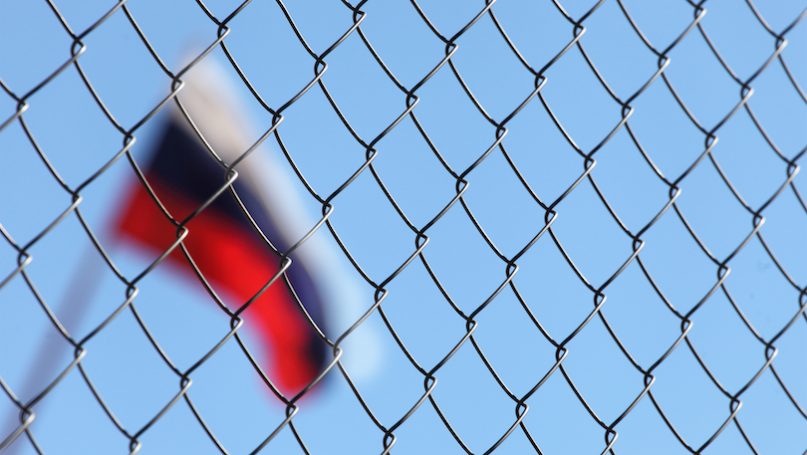
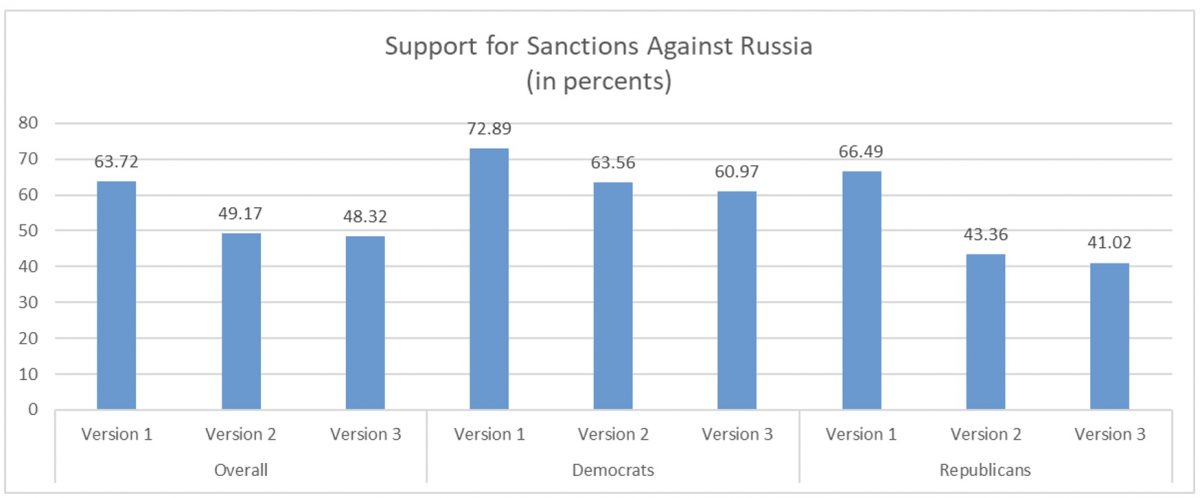
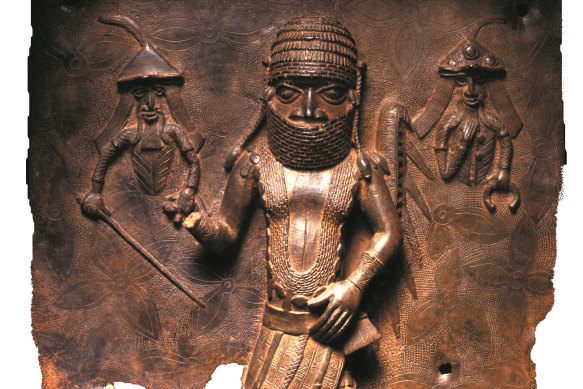
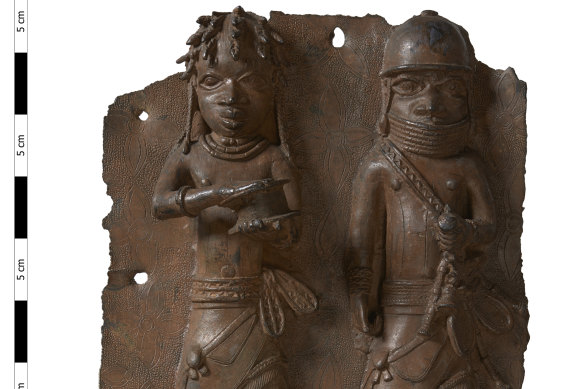





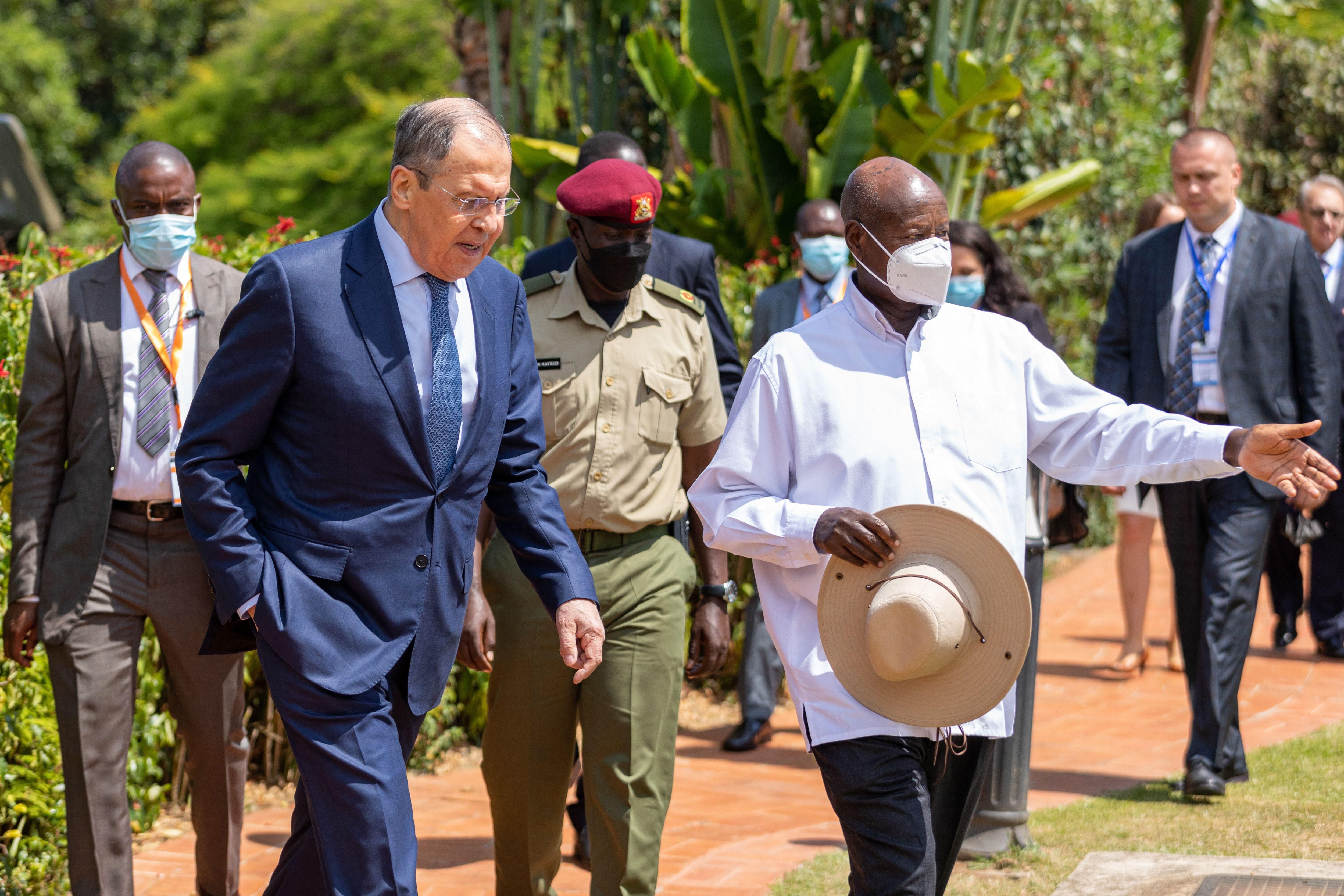

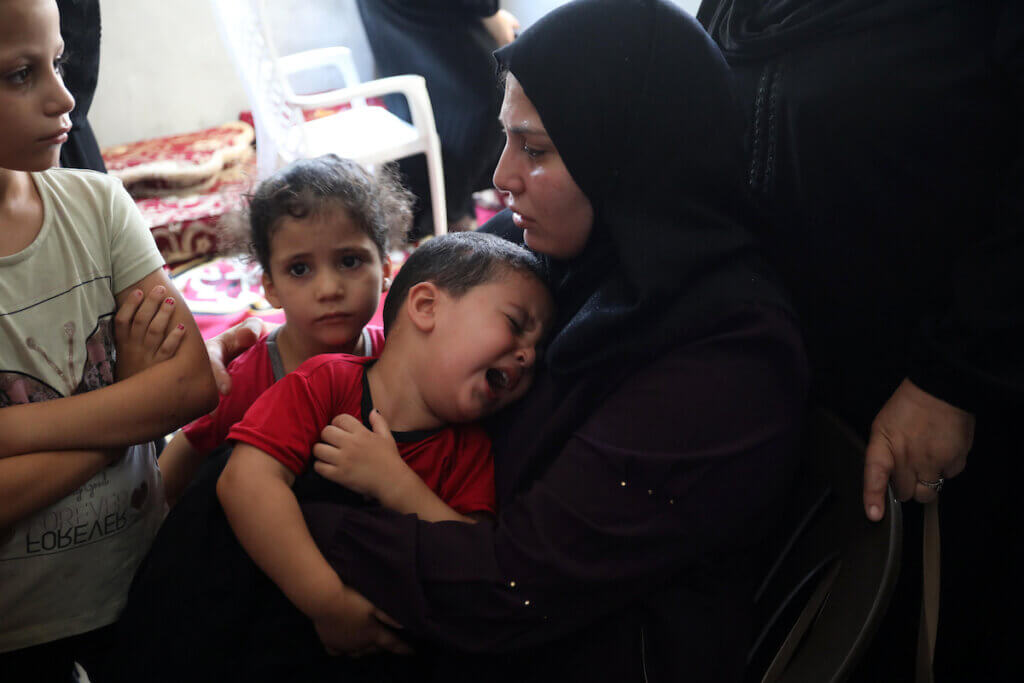 MOURNERS ATTENDING THE FUNERAL OF SEVEN PALESTINIANS KILLED IN ISRAELI AIR STRIKES ON RAFAH IN THE SOUTHERN GAZA STRIP, ON AUGUST 7, 2022. (PHOTO BY ASHRAF AMRA/APAIMAGES)
MOURNERS ATTENDING THE FUNERAL OF SEVEN PALESTINIANS KILLED IN ISRAELI AIR STRIKES ON RAFAH IN THE SOUTHERN GAZA STRIP, ON AUGUST 7, 2022. (PHOTO BY ASHRAF AMRA/APAIMAGES)





